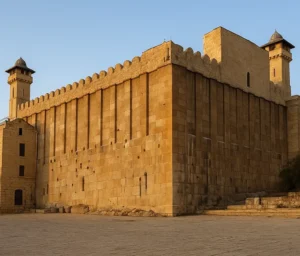Parashat Chayei Sarah opens with a striking structure: it states “the life of Sarah” and immediately recounts her passing. This teaches that true life is not measured in years, but in connection to Hashem. A life lived in attachment to the Eternal does not end — it reveals its essence more clearly. What appears as death is a continuation in a different form.
Avraham rises from mourning and acquires Ma’arat HaMachpelah, the first acquisition of Eretz Yisrael recorded in the Torah. It is notable that this first foothold is not a place of governance or commerce, but a burial site. The bond with the Land is not based on temporal power but on netzach Yisrael (the eternity of Israel). The cave becomes a passageway between worlds — a sign that, for those connected to Hashem, mortality is not a barrier but a transition.
Avraham then ensures the continuity of the brit by sending his servant to seek a wife for Yitzchak. This generational shift is not accidental or natural — it is guided, prayed for, and marked by chesed (loving-kindness) and emunah (faithfulness). The Torah reveals a deep pattern: mourning and renewal, loss and emergence, memory and future. These are not contradictions but aspects of a single covenantal process.
The message is clear: the tzaddikim (righteous) do not cease — they endure. The mission does not fade — it deepens. The Land is not held politically but spiritually. And the Jewish future is not a result of nature, but of brit and hashgachah pratit. Parashat Chayei Sarah is not about departure — it is about permanence.

